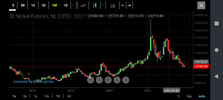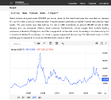JohnDe
La dolce vita
- Joined
- 11 March 2020
- Posts
- 4,553
- Reactions
- 6,692
Anticipating a much better year for nickel (couldn't get much worse).
No price chart as it seems that Kitco is battling a cyber attack.
All depends on whether large multinationals are happy and willing to buy from countries with poor health and safety standards.










